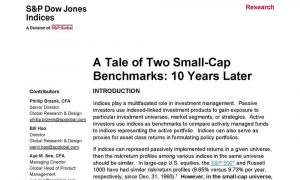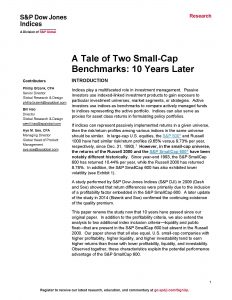
A Tale of Two Small-Cap Benchmarks: 10 Years Later
Posted on 10/04/2019
This article is sponsored by S&P Dow Jones Indices.
Indices play a multifaceted role in investment management. Passive investors use indexed-linked investment products to gain exposure to particular investment universes, market segments, or strategies. Active investors use indices as benchmarks to compare actively managed funds to indices representing the active portfolio. Indices can also serve as proxies for asset class returns in formulating policy portfolios.
If indices can represent passively implemented returns in a given universe, then the risk/return profiles among various indices in the same universe should be similar. In large-cap U.S. equities, the S&P 500® and Russell 1000 have had similar risk/return profiles (9.65% versus 9.73% per year, respectively, since Dec. 31, 1993). However, in the small-cap universe, the returns of the Russell 2000 and the S&P SmallCap 600® have been notably different historically.

Disclaimer
By clicking on the link to view the report, you acknowledge you are an institutional investor or other accredited investor.
